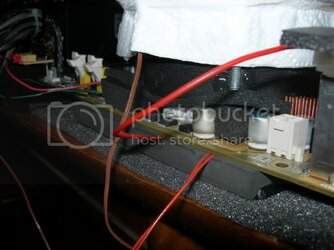Generally speaking, where does the point of condensation occur with extreme cooling? Is it something like ambient-x number of degrees, or does it vary with other environmental factors like barometer, humidity, whatever, etc.?
Also, what exactly needs to be insulated when going for subzero cooling? Is it the cooling equipment, or non-cooled parts of the computer? Sorry if all this is answered in a sticky... it's late and I'm being rushed toward bed
Also, what exactly needs to be insulated when going for subzero cooling? Is it the cooling equipment, or non-cooled parts of the computer? Sorry if all this is answered in a sticky... it's late and I'm being rushed toward bed
 edit: I over-simplified the example, but it should give you some indication of what will happen
edit: I over-simplified the example, but it should give you some indication of what will happen 
